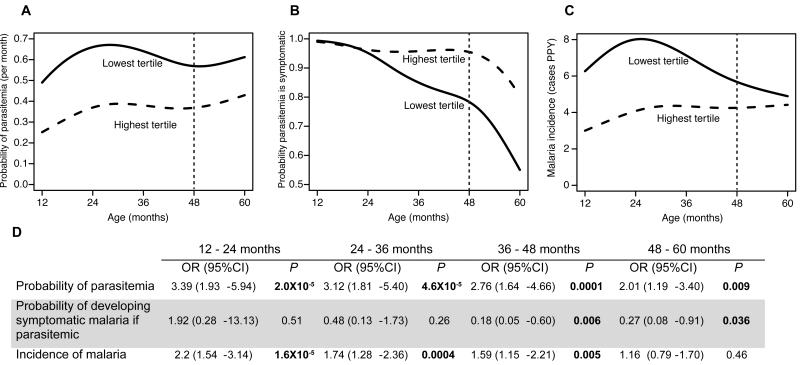Fig. 7.
The probability of parasitemia (A), probability of developing symptoms if parasitemic (B), and incidence of malaria (C) by age in children with the highest and lowest tertile percentages of malaria-responsive IFNγ+/TNFα+-producing γδlow T cells. Vertical dashed lines represent time assay performed. Children in the lowest tertile of IFNγ+/TNFα+-producing γδlow T cells had a consistently higher monthly probability of parasitemia (A), but lower probability of symptoms if parasitemic (B). Although children in the lowest tertile had a higher incidence of symptomatic malaria early in the study (C), by 48-60 months of age the incidence of symptomatic malaria in the two groups was similar. (D) Associations between the lowest vs. highest (reference group) of γδ-T cell responses and the monthly risk of parasitemia, probability of developing symptoms if parasitemic, and incidence of malaria, stratified by year of age using generalized estimating equations with robust standard errors. OR: Odds ratio.

